England come into this year’s World Cup as possible tournament favourites after winning the UEFA Women’s European Championships just 12 months ago. This team has been putting in dominant performances since the arrival of their Dutch manager Sarina Wiegman. She has led the Lionesses to multiple cup successes since her appointment back in 2021, with back-to-back Arnold Clark Cup victories and most recently beating Brazil on penalties at Wembley in the inaugural Women’s Finalissima.
“I have huge belief in this squad and we’re very fortunate to be selecting a fantastic group of players to travel to Australia.” – Wiegman
With a strong squad of winners, and a good mix of both experience and young talent, Wiegman will be hoping to lead England to their first World Cup win. However, it isn’t plain sailing as they go into the tournament without their Captain and centre back Leah Williamson and the 2022 Euro’s tournament Golden Boot and Player of the Tournament winner Beth Mead. Missing players to injury and their recent 0-2 loss to co-hosts Australia in a friendly may put some worry into the minds of the Lionesses. Haiti may be an easier team to come up against in their group, but Denmark and China also boast strong sides and it won’t be easy going to the knockout stages for any team.
With a proven track record of successes, and a fantastic head coach in Wiegman, England is looking to continue their rich vein of good form by adding the World Cup to their list of recent accolades as they prepare to take on Haiti in their opening game in Brisbane, Australia.
This tactical analysis will look at the England team, with an analysis of their players and their tactics in attack, defence, and transition. The scout report will also focus on their key player and what a realistic expectation for the Lionesses could be.
Predicted Starting XI
Wiegman is lauded for her tactical brilliance and ability to instil resilience and competitiveness in her sides. England will be no different in this tournament and will look to stamp their playing style any time they come up against. The Dutch manager tends to settle on her starting eleven early on, and if the Euro’s any indication of what they do, it’s likely not to change much throughout the tournament. With that said, injuries to key players and breakout seasons for some new faces make it slightly more challenging to nail down an exact tournament eleven.
As mentioned, captain Williamson unfortunately suffered a late-season injury in a WSL game against Manchester United which is undoubtedly a blow to Wiegman’s plans and will impact the back 4. After an incredible Euro 2022 campaign in which Mead led the tournament in both assists and goals, she too will miss out on the World Cup this year as she won’t recover in time from her ACL injury suffered back in November. Two of their guaranteed starters aren’t travelling with the team to Australia and New Zealand this summer, and there are places up for grabs in this England side.
Wiegman’s England will set up in a 4-3-3 shape.
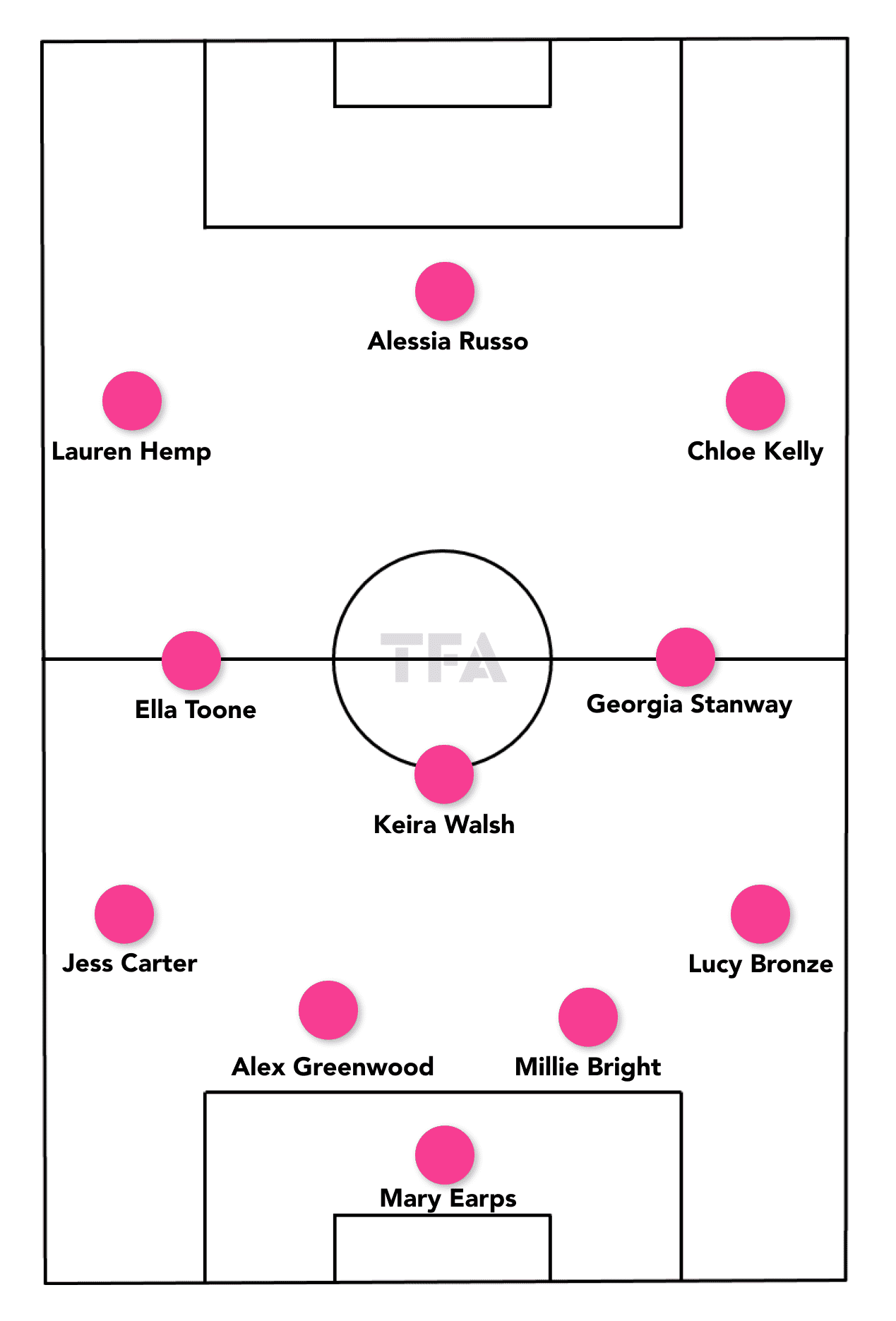
There are no surprises in goal, with Mary Earps named best goalkeeper in the world last year, she will undoubtedly start between the sticks in the World Cup for England again. Earps is a fantastic shot-stopper and goalkeeper, but what stands out is her ability to use the ball and build up from the back. This is a key factor in Wiegman’s decision to go for Earps as her number one, factoring in England’s playing style of building out of the back and playing short and simple passes to her teammates.
The back four is an area of focus for England in this tournament, and it will be interesting to see who Wiegman plays. Starting at right-back will be Lucy Bronze. Plying her trade at Barcelona, the 31-year-old 2019 Ballon d’Or winner has the perfect blend of attacking flair and defensive solidity. She will be England’s most experienced player going into the summer with 104 caps to her name, and will undoubtedly be one of the first names on the teamsheet this summer. Alongside her will be tournament captain Millie Bright. She is a proper defender who will be one to look out for in set pieces. The other centre-back will likely be Alex Greenwood. With a fantastic delivery and ability to whip dangerous balls in from corners and set pieces, she will be a valuable asset to England’s defensive and offensive output.
In recent games, Jess Carter has solidified herself as Wiegman’s first-choice left-back with Williamson out and Greenwood playing at centre-back in her absence. Moreover, the other choice Rachel Daly has finally been listed as a forward in the England squad after her success as an out-and-out centre forward for Aston Villa this season.
In midfield, little is in doubt. The trio of Keira Walsh, Ella Toone and Georgia Stanway will continue leading the way for their country. It is a well-balanced blend of defensive solidity and attacking flair that will be the heartbeat for England this summer.
Lauren Hemp and Chloe Kelly will more than likely be the first choice for the left and right-wing spots respectively. Both have the ability to beat a man out wide and provide dangerous crosses to Alessia Russo playing up front, or drift inside to link up with the midfielders and the striker to find intricate passes through opposition defences.
England’s squad this year has quite a few exciting young talents looking to make a name for themselves on the world stage. Although they have an average age of just 25.5 years old, they also have older players that have had years of experience playing at the top level and with leaders like Bronze, Jordan Nobbs and Laura Coombs.
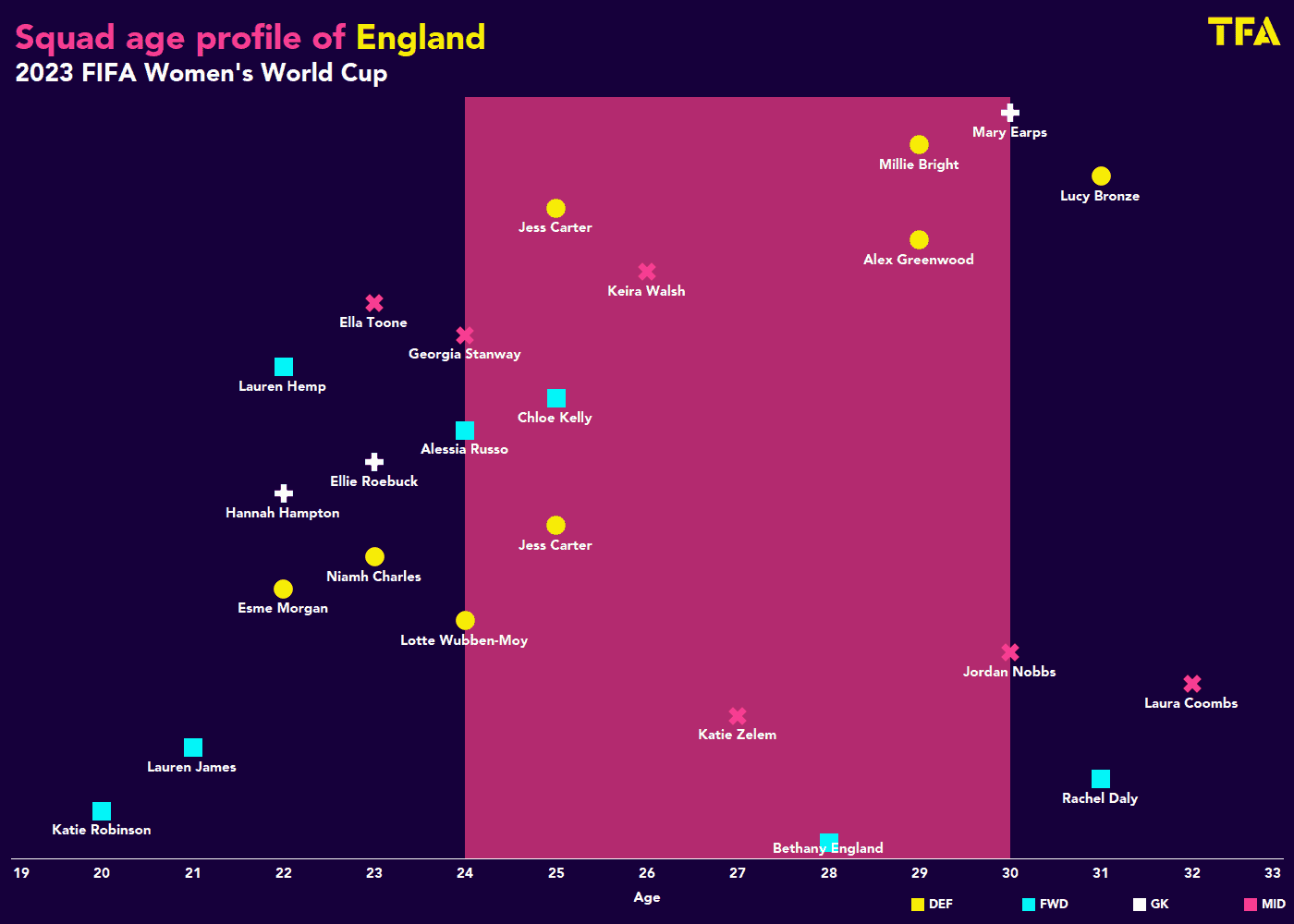
Attacking phase
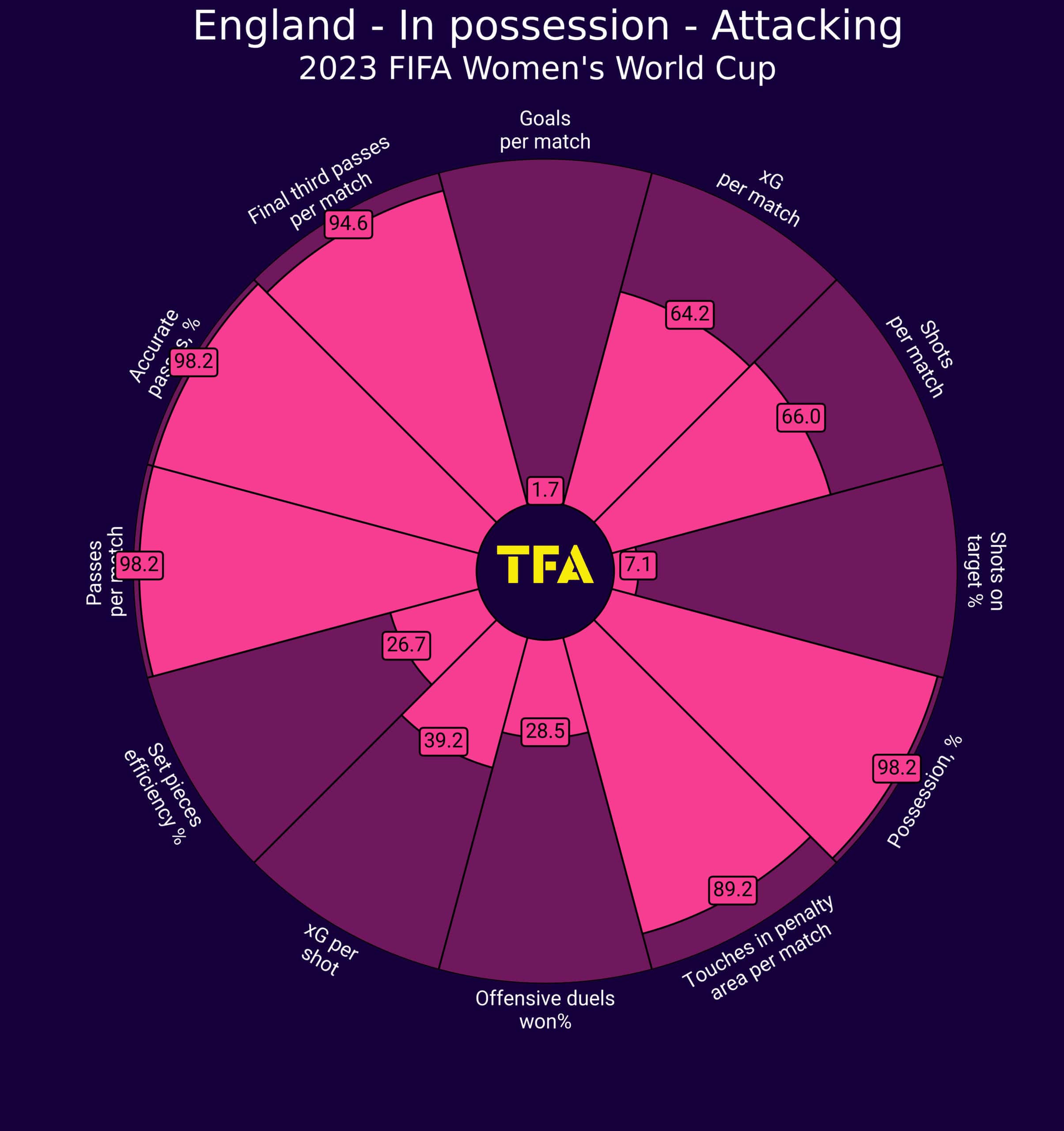
Wiegman likes to set her team up in a 4-3-3 during the build-up phase. Earps is great with her feet and will often play short to the centre-backs that attempt to drag the opposition deep into the Lioness’s half. The centre-backs split wide and try to find Walsh who plays a pivotal role in England’s attacking play. Walsh is able to receive the ball in deep areas and connect the team from back to front. They look to her to cycle the ball wide and find passes in dangerous areas.

Though against most teams England generally dominates possession, they don’t just keep the ball along the back, they try to move the ball quickly and exploit spaces and gaps between opposition lines where possible. The movement in the wide areas is what helps Walsh and the centre-backs find the space to play passes out wide or between the opposition midfield and defensive line. The full-backs and wingers will rotate, ensuring width is maintained and drawing opposition players out of shape. This allows Stanway and Toone to sit in the inside channels to wait to receive the ball on the half-turn and immediately launch an attack.
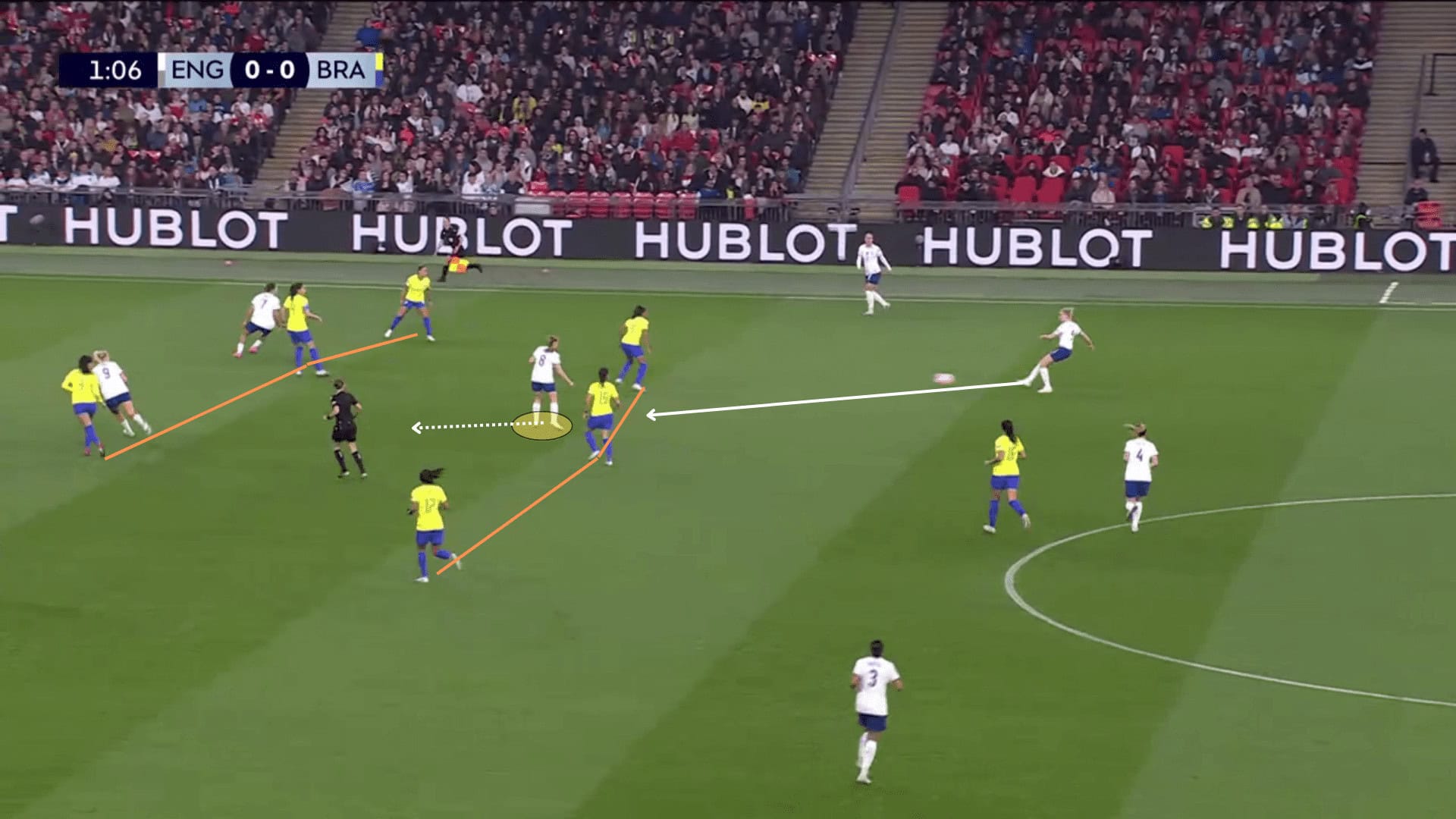
With this in mind, you will often find England set up with 5 players across the front line. Russo sits in between the centre-backs, and a combination of the wingers, midfielders and full-backs will make up the players in the inside channels and out wide. Because of this constant rotation between wide players, it is difficult for defending teams to defend against the defensive splitting pass or mark the wide players out of the game.
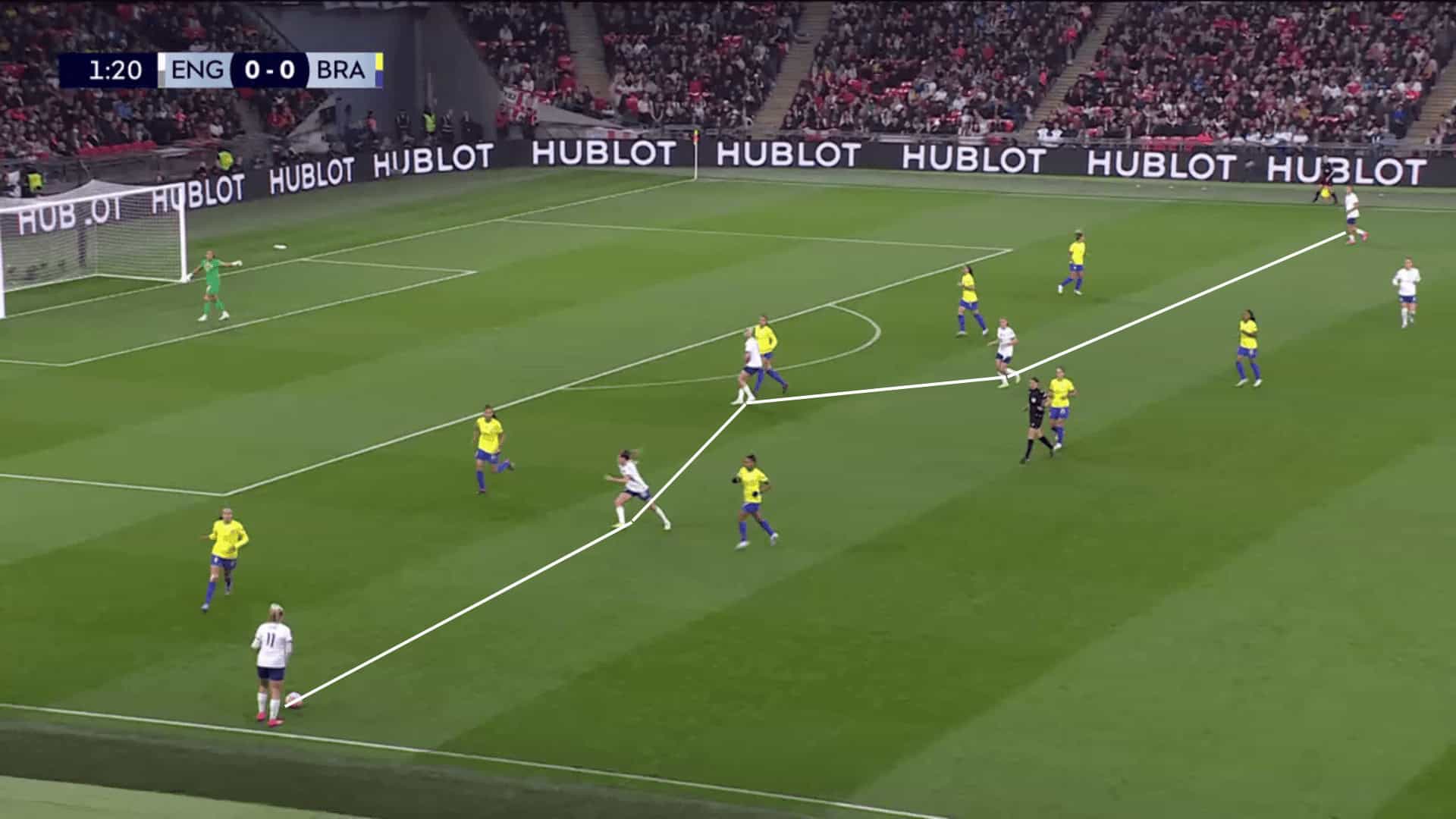
At times, full-backs Carter and Bronze will push far forward to be the attacking width of the five, allowing the likes of Hemp and Kelly to receive the ball in the inside channels alongside Russo to link up play. In this instance, midfielders Toone and Stanway aid Walsh in the build-up to find a defence-splitting pass, still maintaining five players in the build-up, and five in the forward line.
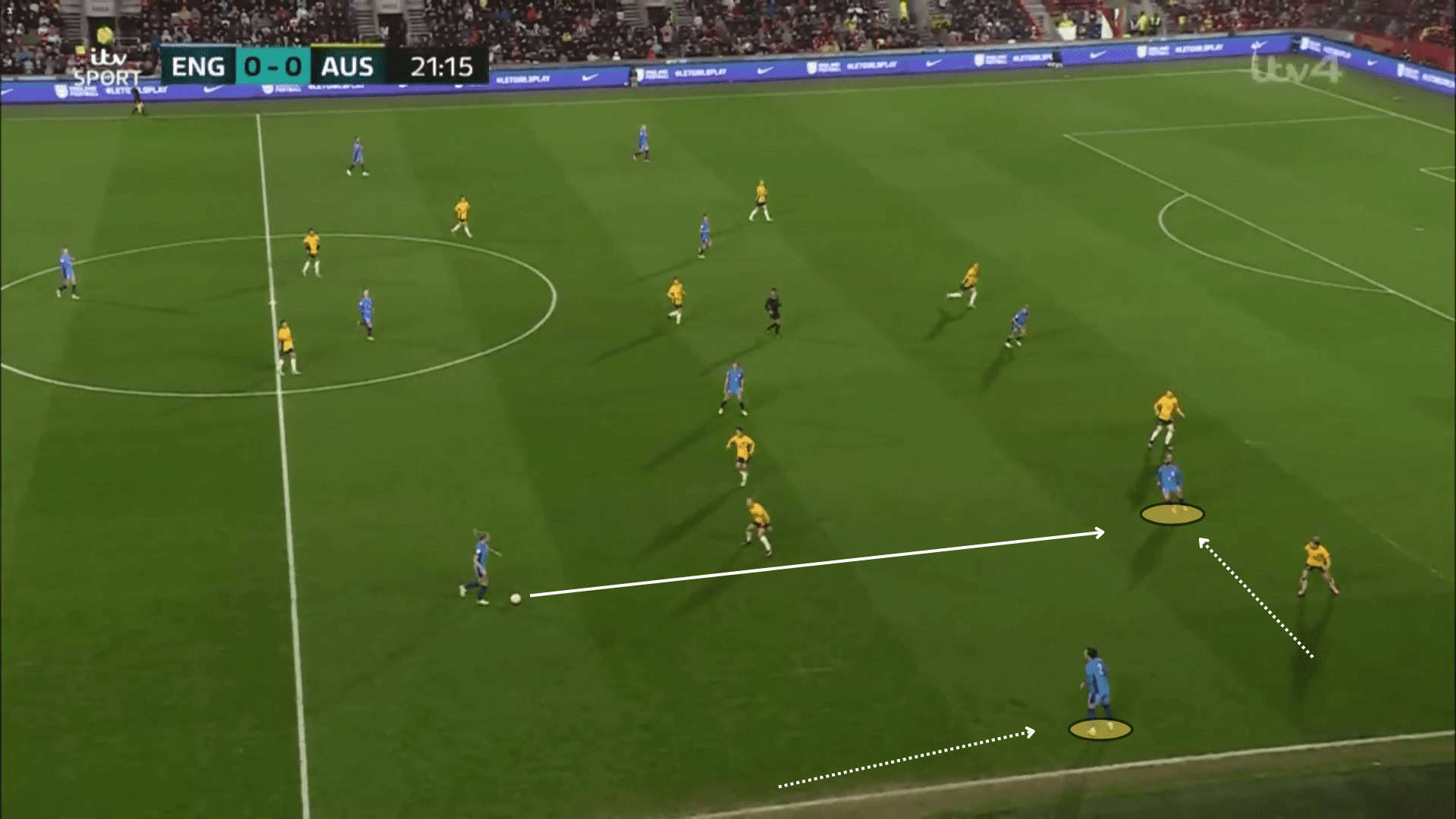
Defensive phase
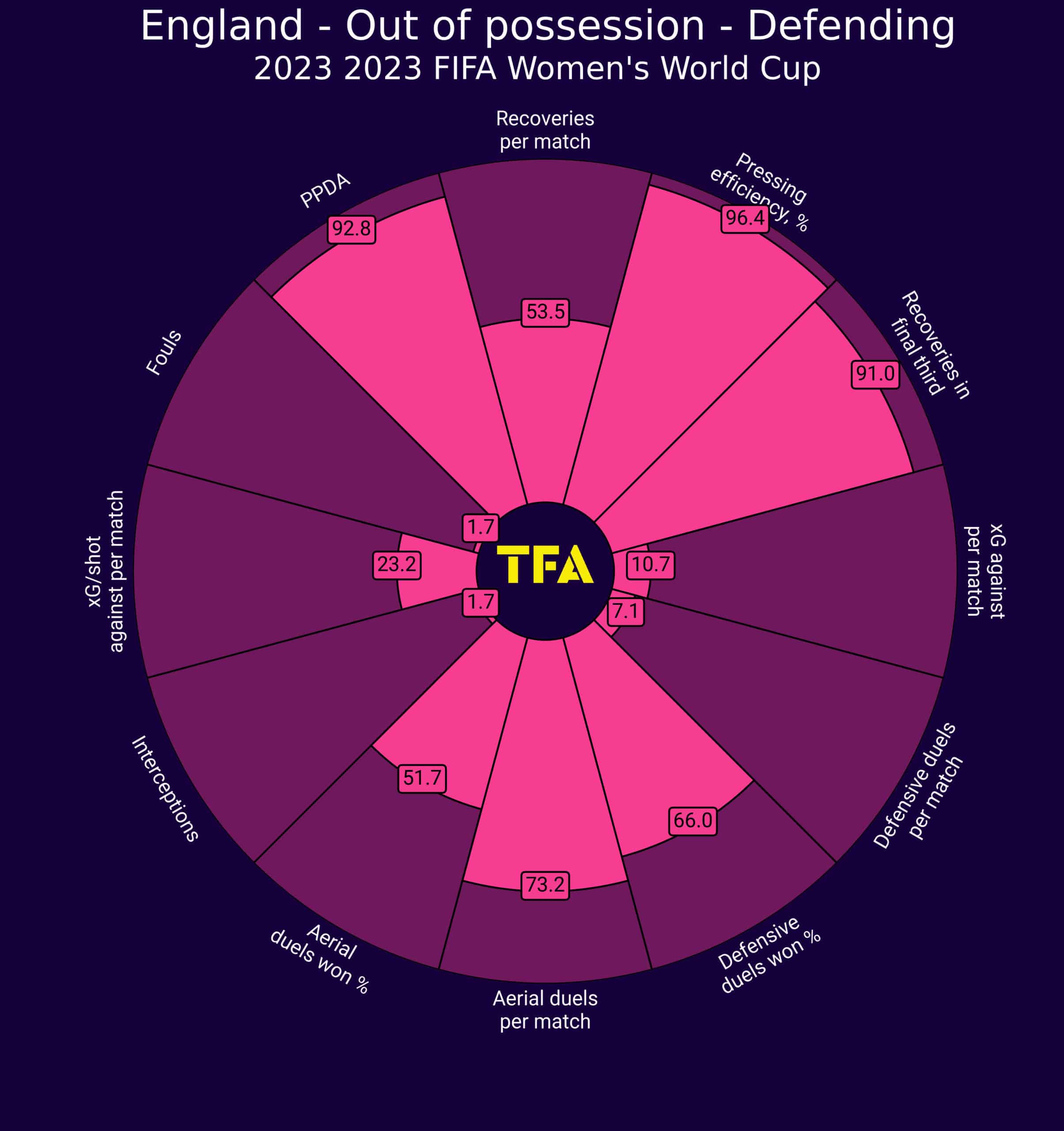
England are a joy to watch for the spectator in the defensive phase. They set up the team as high as possible and look to stifle the attacks at the build-up. If teams play out from the back, Russo and the nearest winger will look to press the opposition centre-backs as soon as they get the ball. From there, the objective is to force them to play in the middle where Stanway and Toone are great at engaging the play up high with their energy and aggressiveness in the press. Teams often resort to playing the ball long as a result, and England are able to regain possession again.
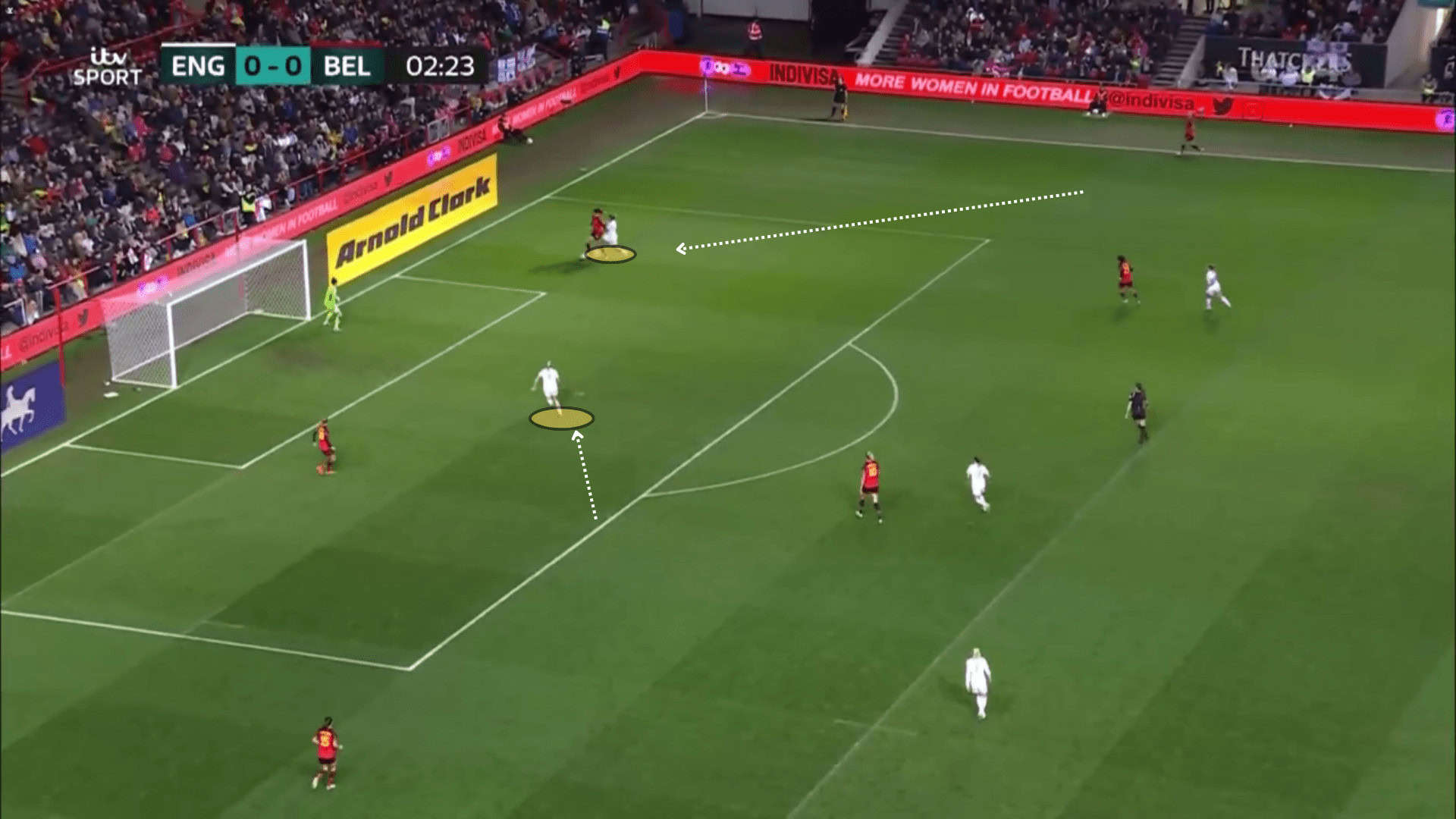
This commitment to set up the team deep in the opposition third requires commitment and belief from all players. Fullbacks are asked to push up high onto the opposition fullbacks when the winger joins Russo to press the centre-backs, this leaves Greenwood and Bright often in a 1v1 battle at the back. Moreover, when teams are able to break the initial press, England tend to not drop into a deeper shape but rather double down on their press by committing more players to the ball. It is a risky tactic but often times the aggression and belief to win the ball back causes the opposition to panic and give the ball away.
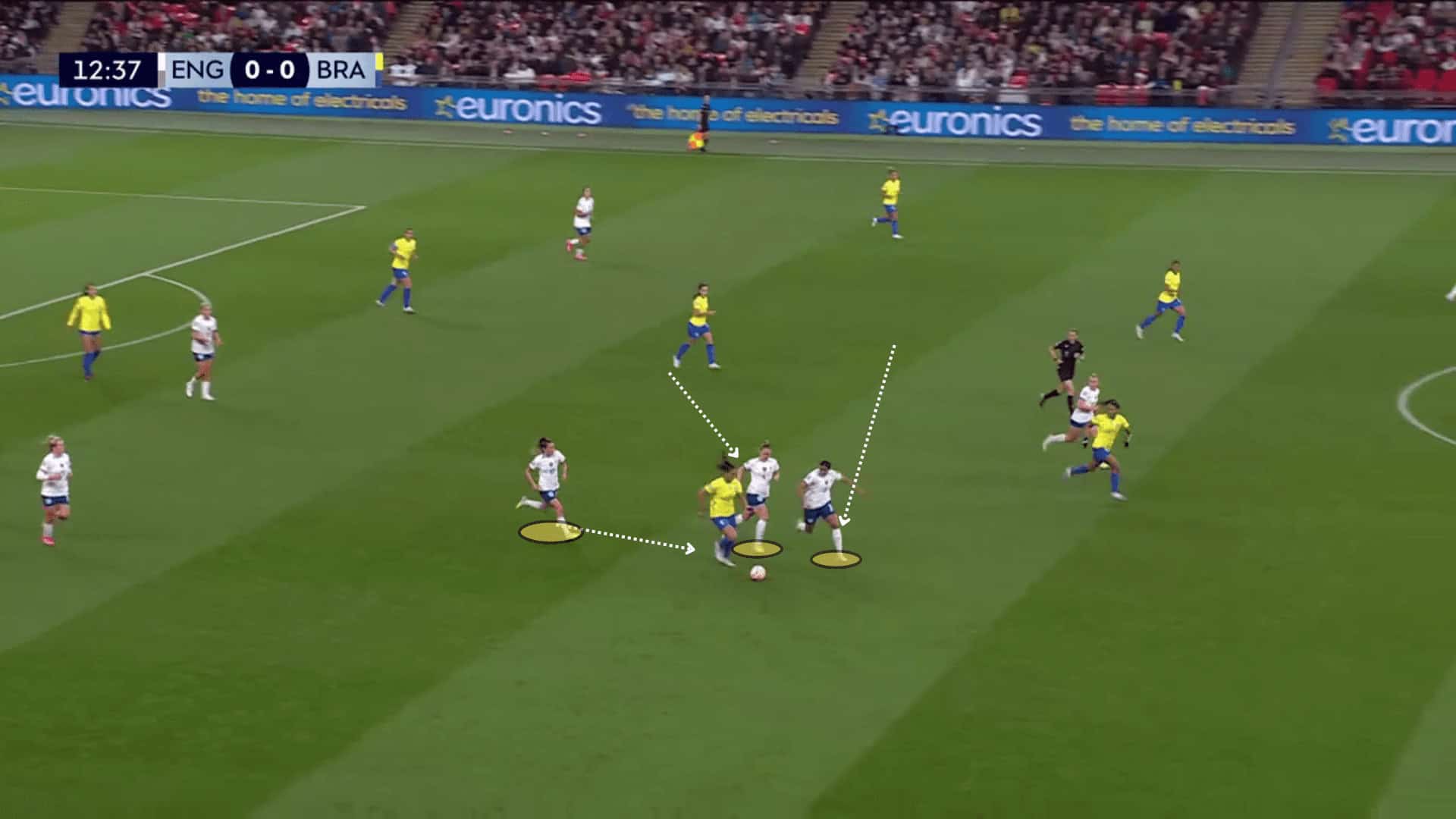
England no doubt will benefit from their relatively young and mobile squad in the way they defend. Key to this as well is their ability to leave their centre-backs to deal with 1v1 situations, Williamson is excellent at this and will sorely be missed in this year’s World Cup campaign.
Transitions
Following a similar trend to how they set up their press in defensive phases, high-intensity pressing is the name of the game when it comes to defensive transitions. What is key to this is the proximity of England’s players when they have the ball. The nearest two/three players to the ball upon conceding possession will immediately move towards the ball and the nearest opposition players regardless of shape or position.
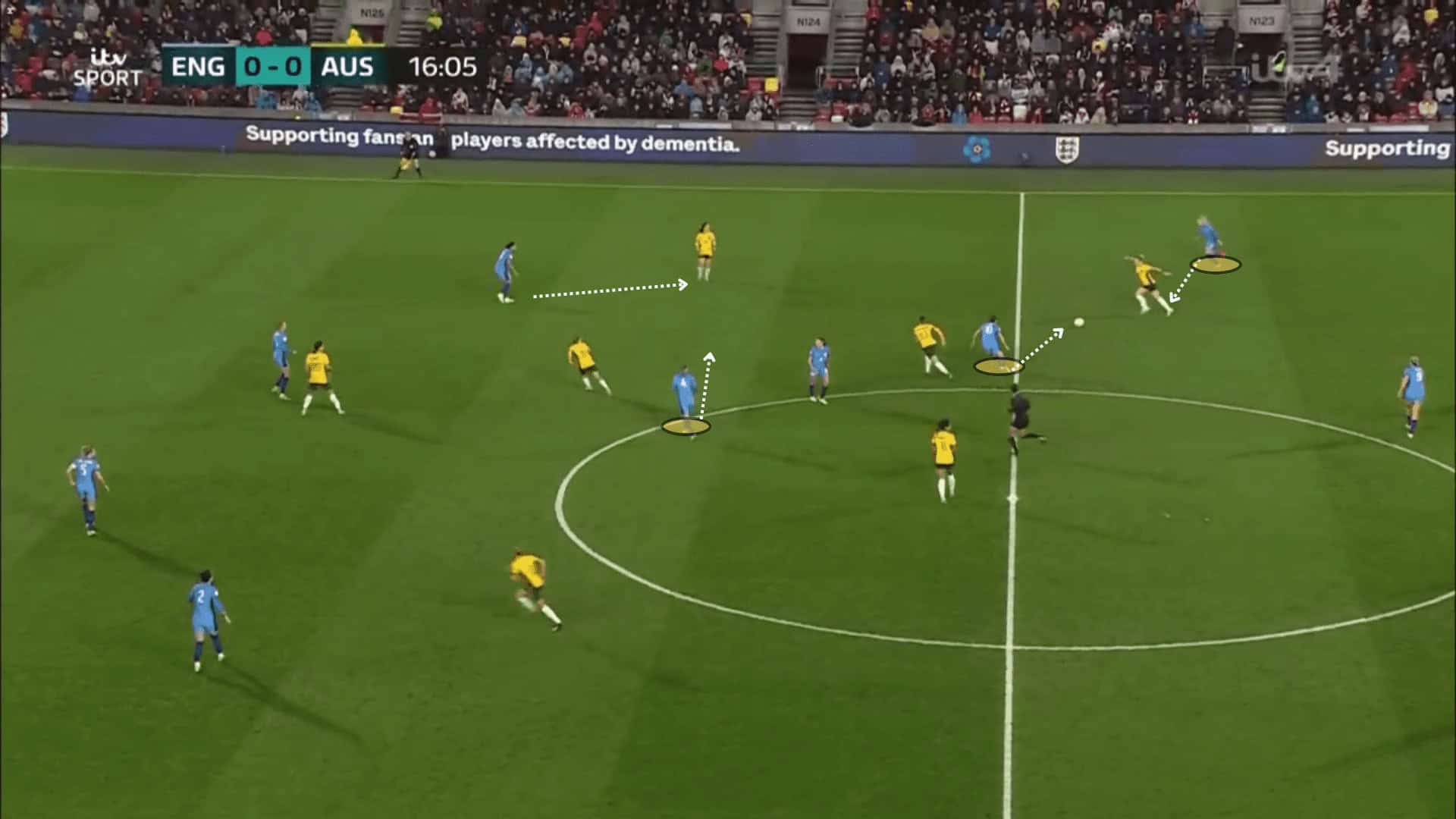
Wiegman demands a lot of the Lionesses during the defensive transition. The press is not only there to stop an immediate counterattack, it is also with the goal to continue the press until the ball has been recovered. This means that when opposition teams recycle the ball backwards to relieve themselves of the immediate press, the England side immediately pushes up and follow the ball down the pitch marking any nearby players and applying pressure on the ball.
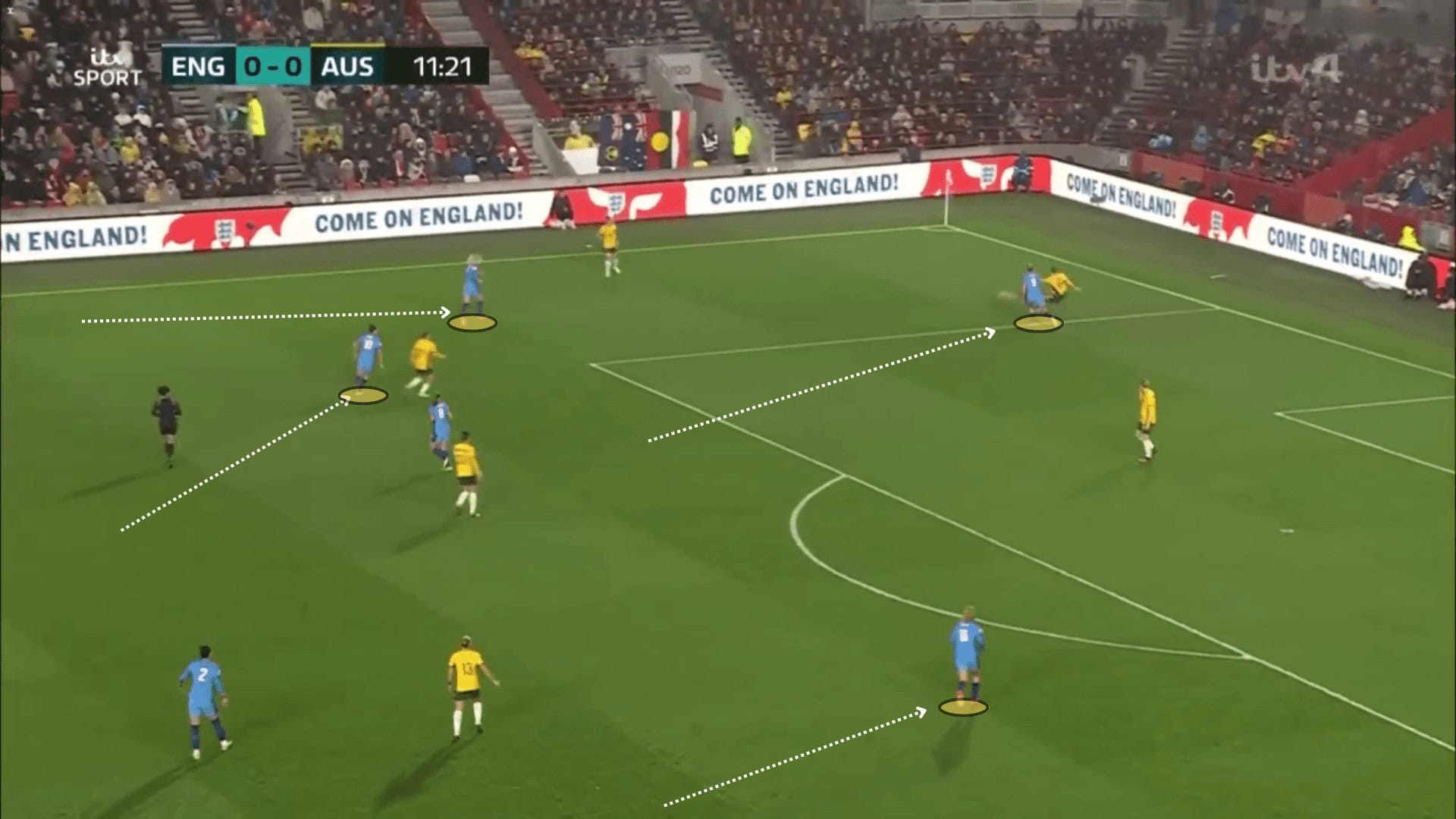
As you can imagine, this is incredibly taxing and physically demanding. The players at times cover the width and length of the pitch to keep the opposition from playing an easy pass. This directly impacts how England plays when they get the ball back. Their offensive transition is unhurried and composed. Unless they regain the ball in a dangerous area with an immediate chance at goal, England recycle the ball to set up their team for a controlled attack.
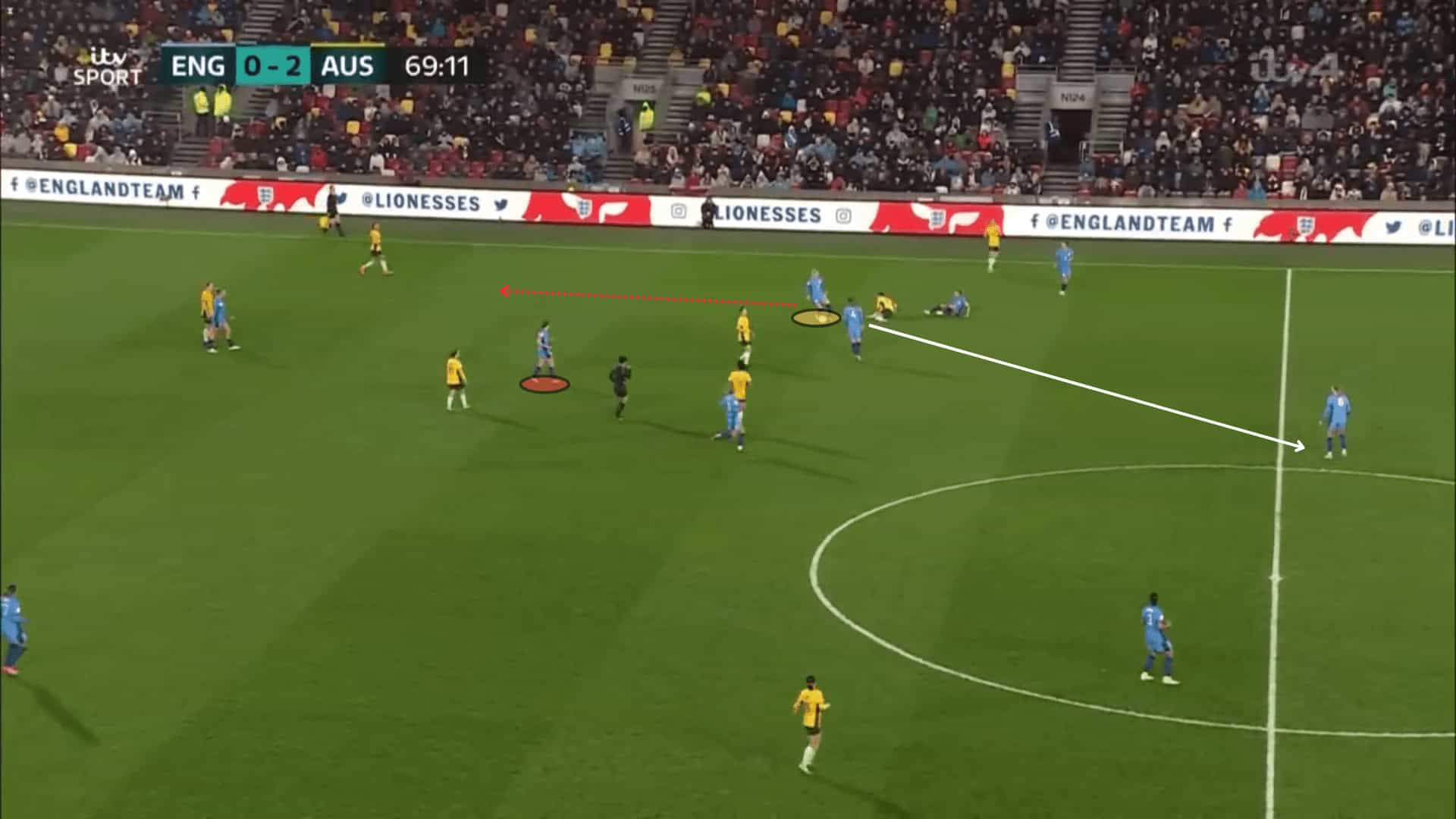
Attackers
England play with an out-and-out ‘number 9’ and two dynamic and pacy wingers, tasked with beating fullbacks and linking up with their striker. Mead will be a big miss for the Lionesses with her ability to get goals from wide areas and link up play, however with Kelly and Hemp on either wing there is plenty of attacking flair and exciting play for fans to look forward to. There is an argument to be made about young Lauren James starting for this England side this summer. A prolific dribbler and wonderful to watch on the ball, James is fantastic on the 1v1 and may be looked towards to unlock stubborn defences with her technical quality and x-factor.
Russo is a familiar face that will lead the line for England this summer. With Ellen White retiring, Russo will look to use her strength in linking up play and her knack for being in the right place at the right time to justify her position up front. With the way England play, Russo will be key to putting the final pieces together further up the pitch, holding off centre-backs and receiving the ball with her back to the goal and bringing other players into play.
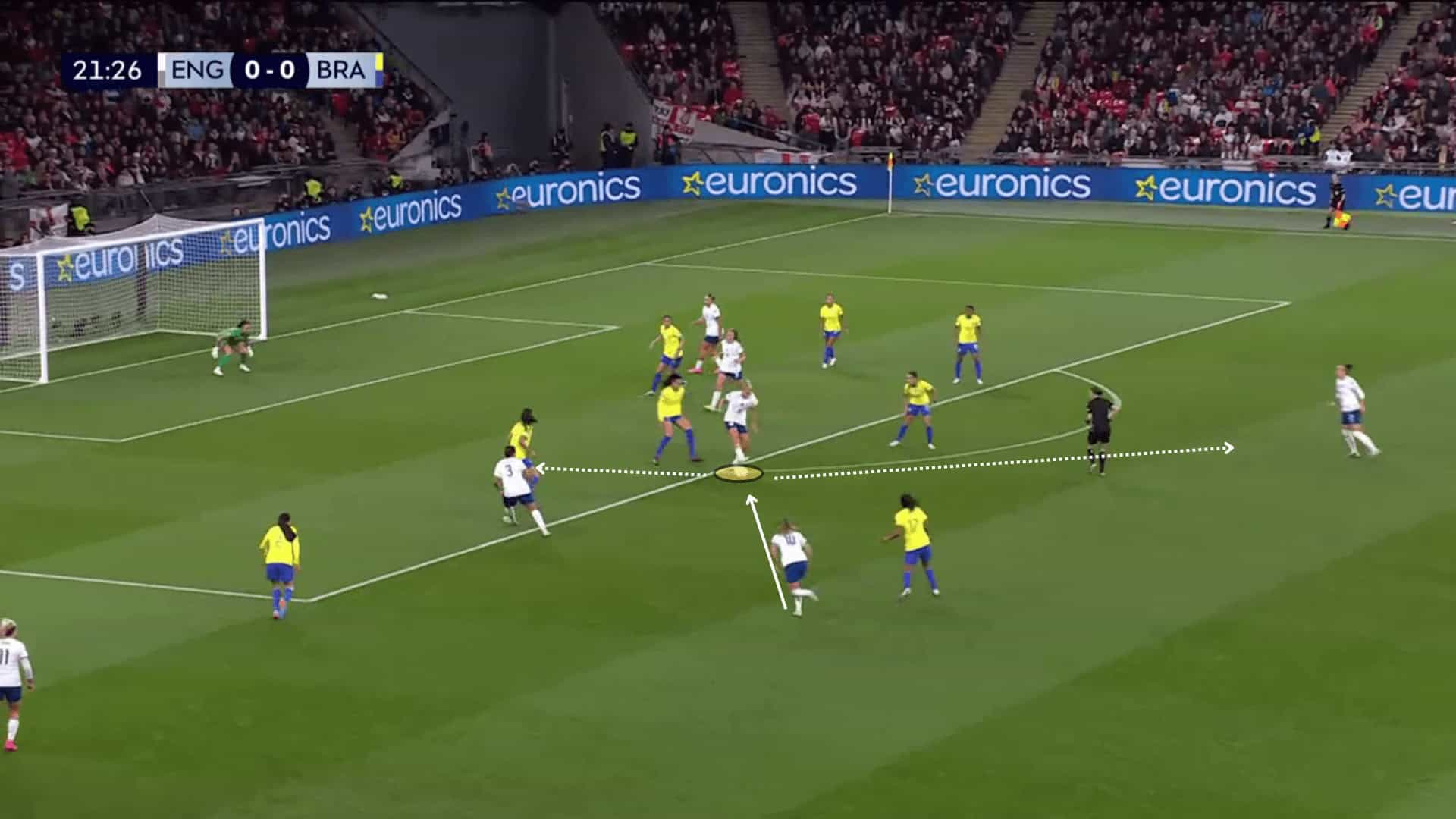
Although Russo will likely remain as Wiegman’s first-choice striker, Daly has had an incredible season with Aston Villa winning the WSL Golden Boot with 22 goals in 22 games. Already scoring 5 goals since her change of position from left back at the Euros, Daly will definitely give Wiegman a different option further up the pitch should she go with her as England’s number 9.
Midfielders
Midfield is one area of England’s side that we will likely see very little change to in regards to the starting 3. Walsh will play a pivotal role at the base of midfield, looking to dictate play and be the heartbeat of this England’s side. After her incredible goal against Spain in the Euros, Stanway will be a familiar face to many, especially after her move to Bayern Munich last summer as she establishes herself as one of the best attacking midfielders in the game. She has incredible energy to get around the pitch and her ability to receive the ball in dangerous areas around the opposition penalty box will be a big asset to England this summer.
With Fran Kirby out of the side for England this summer, Euro 2022 super-sub Toone will look to complete Wiegman’s midfield trio after another great season with Manchester United in the WSL. With energy in the press and an eye for goal, netting 16 goals in her 31 caps for England so far, she will definitely play an important role and may be the attacking spark England will need against difficult opposition.
England don’t have that much quality in midfield on the bench and this is highlighted by seeing the likes of Jordan Nobbs and Laura Coombs making a resurgence into the squad as veterans of the game. Both are tidy in possession and all round-good players, however, it will likely be Katie Zelem who will help off the bench if needed, after another strong season as captain of a Manchester United side that finished second this season in the WSL.
Defenders
With the loss of Williamson and the conversion of Daly to a forward, there has been a bit of a reshuffle for Wiegman to find the right balance at the back. A potential option would be to keep Greenwood as a left-back and see the likes of Esme Morgan or Lotte Wubben-Moy step in alongside Bright. Bronze will be the cornerstone of England’s defence and will play a crucial role in stepping forward to support the forward line, and link up with the midfield and wingers to break down stubborn defences.
Key player
England are blessed to have many fantastic players, all of whom contributed to success two years after Wiegman’s appointment in 2021. However, it would be hard to argue against England’s most important player, and the most expensive player in the world — their midfield maestro, Walsh. Walsh is England’s centre-piece, the person looked towards to dictate play and control possession, as well as initiate the press and provide balance at the back. What stands her clear from most defensive midfielders, and possibly a big factor in Barcelona’s decision to spend £400,000 for her, is her ability on the ball.
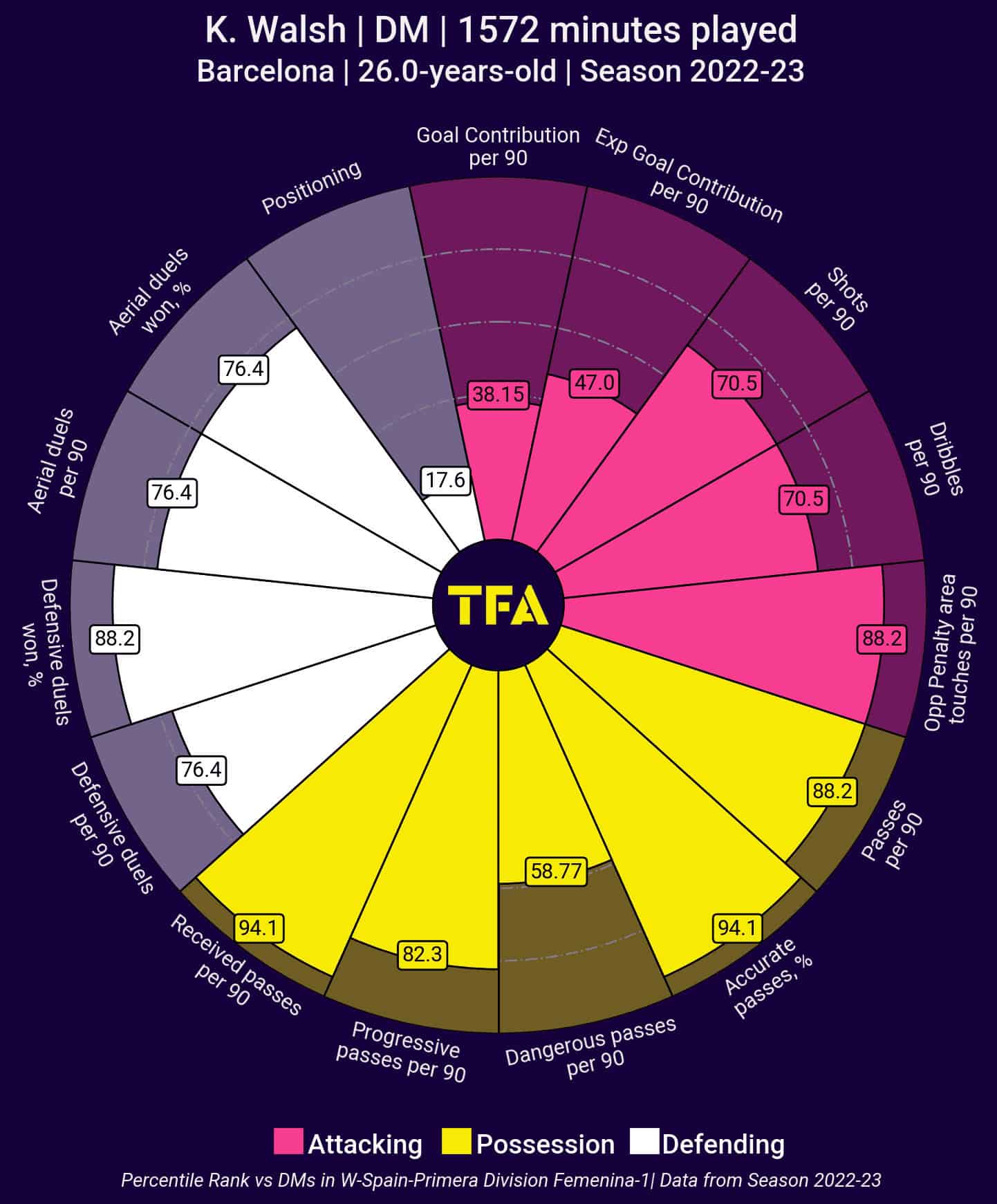
She is simple and decisive in possession, Walsh dictates England’s rhythm and connects defensive to attack. She is composed on the ball, but also key to her side’s press as she picks up opposition strikers who drop deep, or slide across to wide areas to pick up second balls and clearances.
Moreover, her defensive splitting passes and ability to find players in pockets and inside channels gives England the ability to commit so many players to forward positions, knowing there is a player like Walsh that can find them.
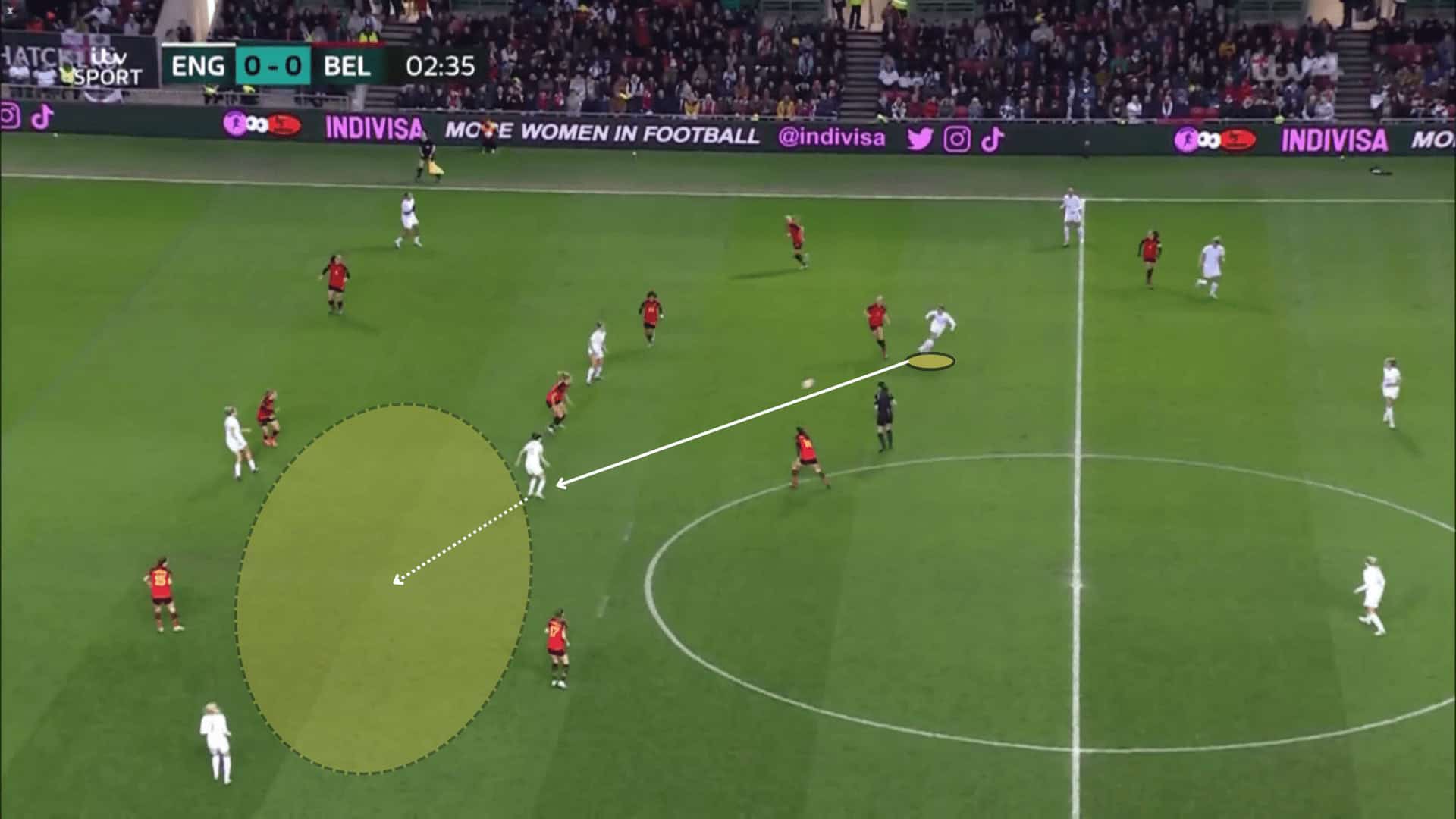
Teams will look to target Walsh, and perhaps even man-mark her to stifle England’s build-up in possession.
Tournament Prediction
Champions of Europe, winner of the Arnold Cup and having beat Brazil on penalties to win the Women’s Finalissima at Wembley, it’s hard to argue that England are favourites to win the tournament this summer. Their group won’t be a walkover, with China and Denmark always ready to put up and challenge and cause an upset.
They may have lost the likes of Williamson, Mead and Kirby, all of whom were fantastic in the Euros last year, but England have a plethora of talent. In combination with a serial winner in manager Wiegman, England will look to provide a serious challenge and charge to win the World Cup for the first time in their history.





Comments